Maciek Chociej
PSP-HDRI$+$: A Synthetic Dataset Generator for Pre-Training of Human-Centric Computer Vision Models
Jul 11, 2022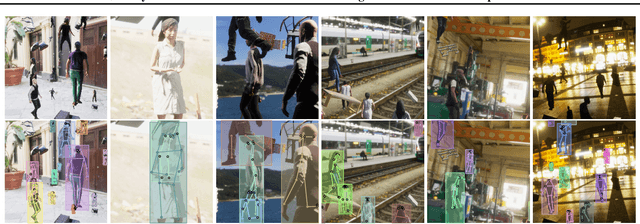
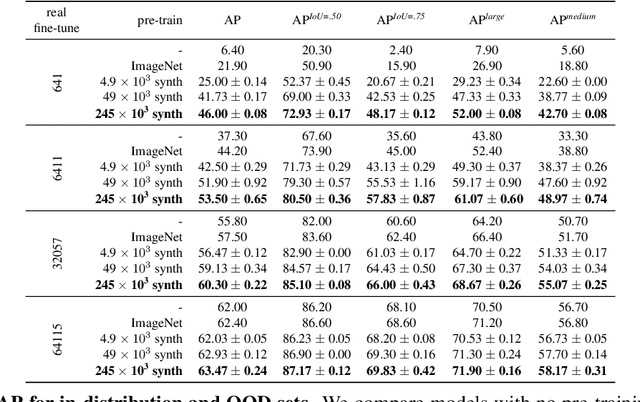


Abstract:We introduce a new synthetic data generator PSP-HDRI$+$ that proves to be a superior pre-training alternative to ImageNet and other large-scale synthetic data counterparts. We demonstrate that pre-training with our synthetic data will yield a more general model that performs better than alternatives even when tested on out-of-distribution (OOD) sets. Furthermore, using ablation studies guided by person keypoint estimation metrics with an off-the-shelf model architecture, we show how to manipulate our synthetic data generator to further improve model performance.
Solving Rubik's Cube with a Robot Hand
Oct 16, 2019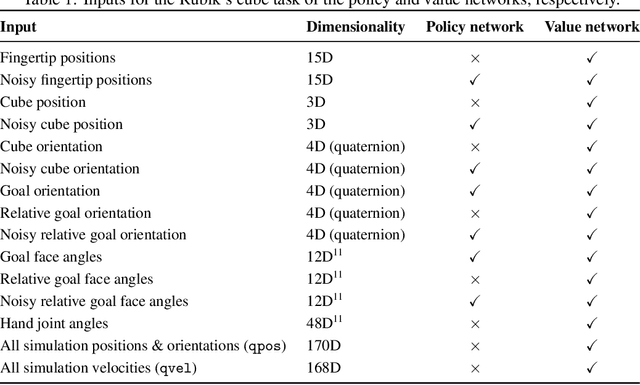
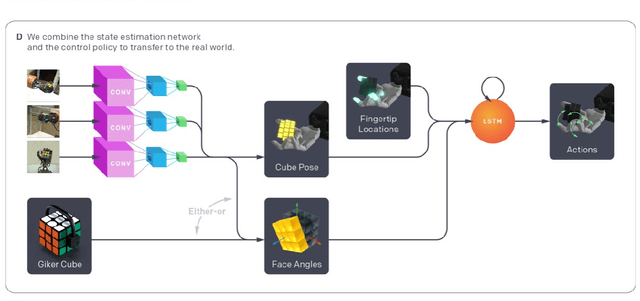

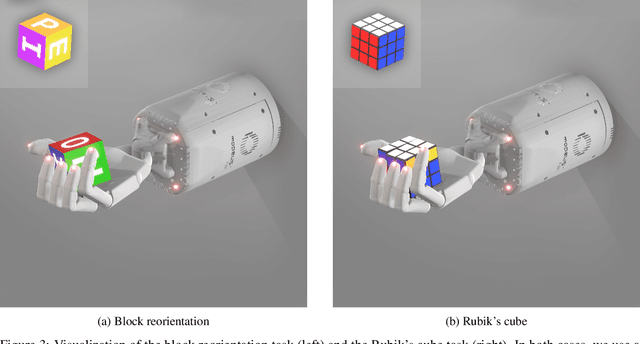
Abstract:We demonstrate that models trained only in simulation can be used to solve a manipulation problem of unprecedented complexity on a real robot. This is made possible by two key components: a novel algorithm, which we call automatic domain randomization (ADR) and a robot platform built for machine learning. ADR automatically generates a distribution over randomized environments of ever-increasing difficulty. Control policies and vision state estimators trained with ADR exhibit vastly improved sim2real transfer. For control policies, memory-augmented models trained on an ADR-generated distribution of environments show clear signs of emergent meta-learning at test time. The combination of ADR with our custom robot platform allows us to solve a Rubik's cube with a humanoid robot hand, which involves both control and state estimation problems. Videos summarizing our results are available: https://openai.com/blog/solving-rubiks-cube/
ORRB -- OpenAI Remote Rendering Backend
Jun 26, 2019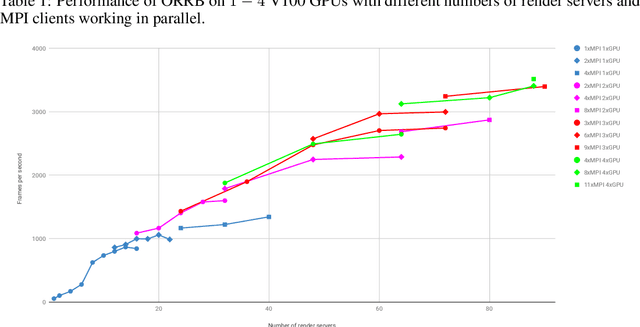
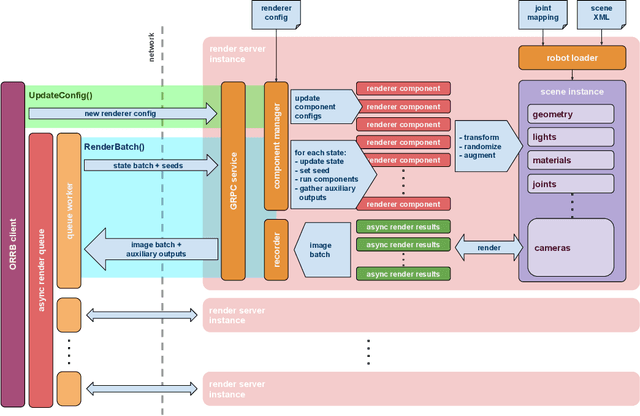
Abstract:We present the OpenAI Remote Rendering Backend (ORRB), a system that allows fast and customizable rendering of robotics environments. It is based on the Unity3d game engine and interfaces with the MuJoCo physics simulation library. ORRB was designed with visual domain randomization in mind. It is optimized for cloud deployment and high throughput operation. We are releasing it to the public under a liberal MIT license: https://github.com/openai/orrb .
Learning Dexterous In-Hand Manipulation
Jan 18, 2019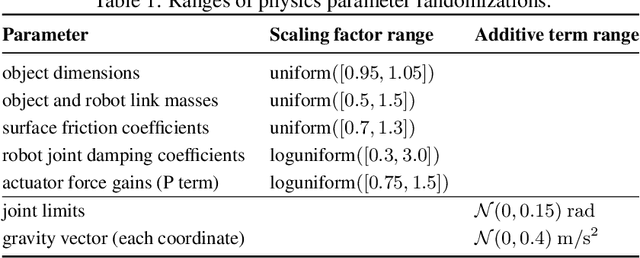
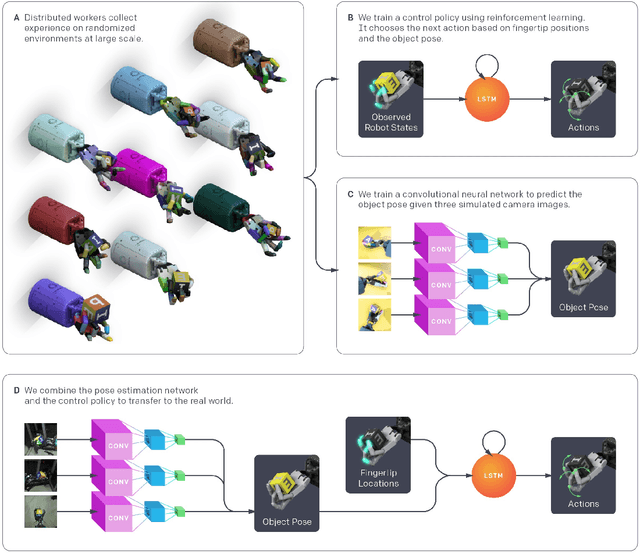
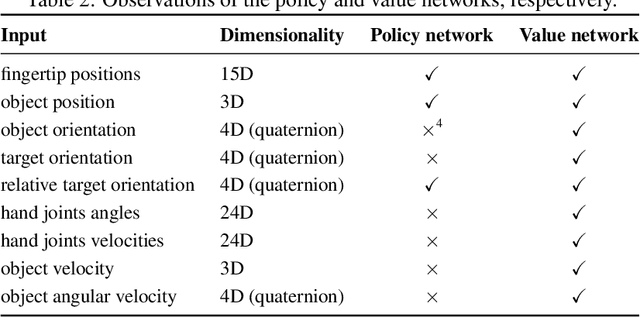
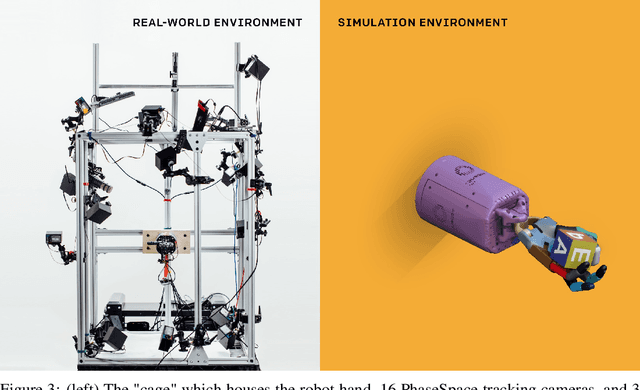
Abstract:We use reinforcement learning (RL) to learn dexterous in-hand manipulation policies which can perform vision-based object reorientation on a physical Shadow Dexterous Hand. The training is performed in a simulated environment in which we randomize many of the physical properties of the system like friction coefficients and an object's appearance. Our policies transfer to the physical robot despite being trained entirely in simulation. Our method does not rely on any human demonstrations, but many behaviors found in human manipulation emerge naturally, including finger gaiting, multi-finger coordination, and the controlled use of gravity. Our results were obtained using the same distributed RL system that was used to train OpenAI Five. We also include a video of our results: https://youtu.be/jwSbzNHGflM
Multi-Goal Reinforcement Learning: Challenging Robotics Environments and Request for Research
Mar 10, 2018

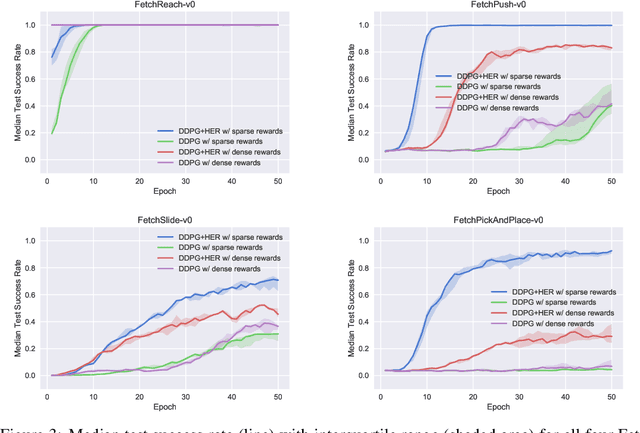
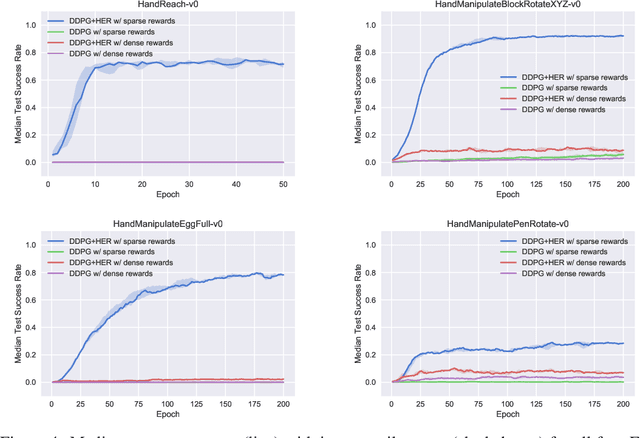
Abstract:The purpose of this technical report is two-fold. First of all, it introduces a suite of challenging continuous control tasks (integrated with OpenAI Gym) based on currently existing robotics hardware. The tasks include pushing, sliding and pick & place with a Fetch robotic arm as well as in-hand object manipulation with a Shadow Dexterous Hand. All tasks have sparse binary rewards and follow a Multi-Goal Reinforcement Learning (RL) framework in which an agent is told what to do using an additional input. The second part of the paper presents a set of concrete research ideas for improving RL algorithms, most of which are related to Multi-Goal RL and Hindsight Experience Replay.
 Add to Chrome
Add to Chrome Add to Firefox
Add to Firefox Add to Edge
Add to Edge